
SWT/KWS MARA MOBILE VETERINARY UNIT
JANUARY 2024


Introduction



3 Cases in January 2 Giraffe Cases 1 Elephant Case
January
Report by Dr. Michael Njoroge
The SWT/KWS Mara Mobile Veterinary Unit attended to 3 cases in January 2024.
The veterinary team attended to a female Masai giraffe with dystocia in Mara North Conservancy. Unfortunately, the giraffe had a grave prognosis since the foetus had died 4 days prior and infection had set in. Despite the team’s best efforts, the giraffe died from septic shock during treatment. The Mara Mobile Veterinary team also successfully treated a female Masai Giraffe with a spear lodged in its hind quarters and a lame elephant bull with a laxation of the hip joint.
Acknowledgement
The Mara Mobile Veterinary team greatly appreciates Elizabeth Scarlett for funding the Unit through the Sheldrick Wildlife Trust. The team also thanks Kenya Wildlife Service for providing technical support and all the conservation partners who contributed to the success of veterinary interventions through timely reporting of veterinary cases and monitoring of treated animals
Case Details
Date Species Area Found Reason for Intervention Outcome 24-Jan 24 Giraffe Mara North Conservancy Natural Causes Adult female Maasai giraffe with dystocia Died. Septic shock 28-Jan 24 Giraffe Mara North Conservancy Spear Adult female Maasai giraffe with a spear lodged in its hind quarters Successfully treated 29-Jan 24 Elephant Mara North Conservancy Natural Causes Lame adult elephant bull Successfully treated
SWT/KWS
January
2024


Mara Mobile Vet Unit Treatment Locations
Giraffe
Natural Causes
Mara North Conservancy
Mara North Conservancy rangers reported an adult female Masai giraffe that had a dead foetus hanging from the vagina due to dystocia that had occurred 4 days earlier.
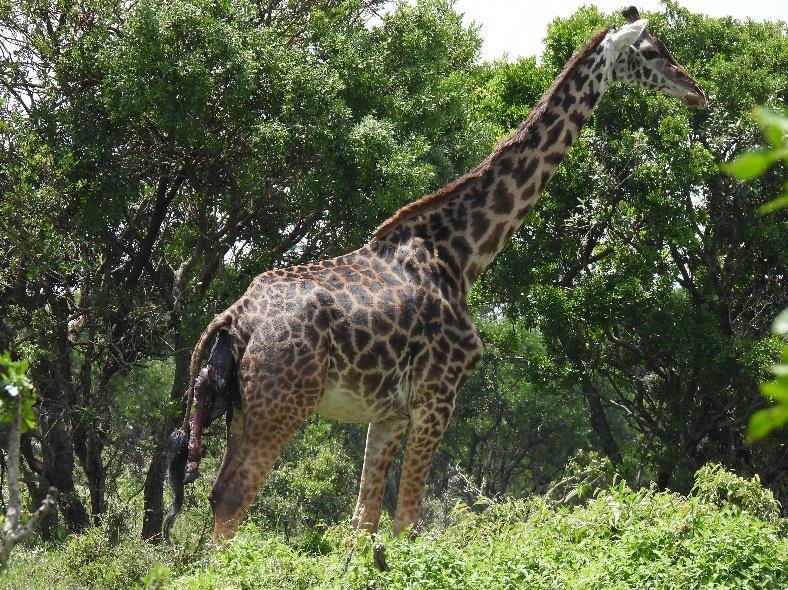

Immobilisation, examination and treatment
The giraffe was darted successfully with 15 mgs Etorphine and 25 mgs Azaperone The animal took off when the dart landed, but the drugs took effect 7 minutes later with the giraffe still standing. The giraffe was roped down, blindfolded, and manually restrained by pinning the head and neck to the ground.
An assessment was then carried out to determine the position of the dead foetus in the womb. Maggots and pus were observed which were an indication of septicaemia. The vagina was flushed with soapy water and healing oil for lubrication before traction was applied to remove the dead foetus. However, during the procedure, the giraffe succumbed to septic shock.
Prognosis
The giraffe had a grave prognosis. Sadly, it died from septic shock during treatment.

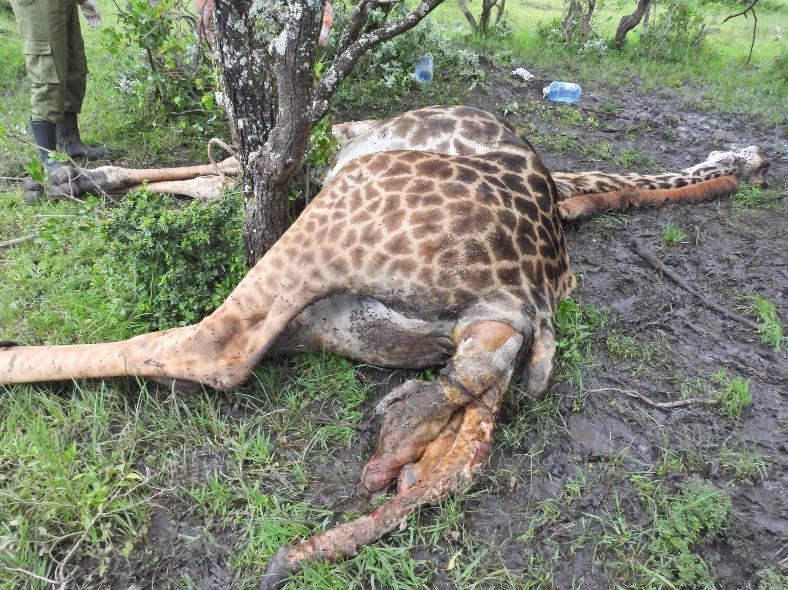
Case 1 – 24th January 2024
Giraffe Spear
Mara North Conservancy
Narok County rangers reported sighting an adult female Masai giraffe with a spear lodged in its hind quarters. The injured animal was in a tower of giraffes near the escarpment.
Immobilisation, examination and treatment
With assistance from County rangers, the veterinary team drove the tower of giraffes away from the escarpment for almost 30 minutes to reduce the risk of the injured animal falling off the cliff post-darting.
The injured giraffe was successfully darted with 15mgs Etorphine and 25mgs Azaperone when it was in a more suitable area. It attempted to run away but was immobilized 7 minutes later. The animal was roped to the ground and went down smoothly. Anaesthesia was immediately reversed with Naltrexone injected into the jugular vein and intramuscularly. The giraffe was then blindfolded and manually restrained by pinning the head and neck to the ground.
The spear was carefully pulled out, and reddish tint exudates oozed from the wound indicating infection. The wound was disinfected with Hydrogen peroxide and Iodine and sprayed with Tetracycline spray topically.
Systemically, 3,000 mgs Amoxicillin and 40 mgs Dexamethasone were administered intramuscularly. The giraffe was released after treatment, it stood energetically and moved towards the tower of giraffes in the nearby thicket.
Prognosis
The giraffe has a good prognosis.
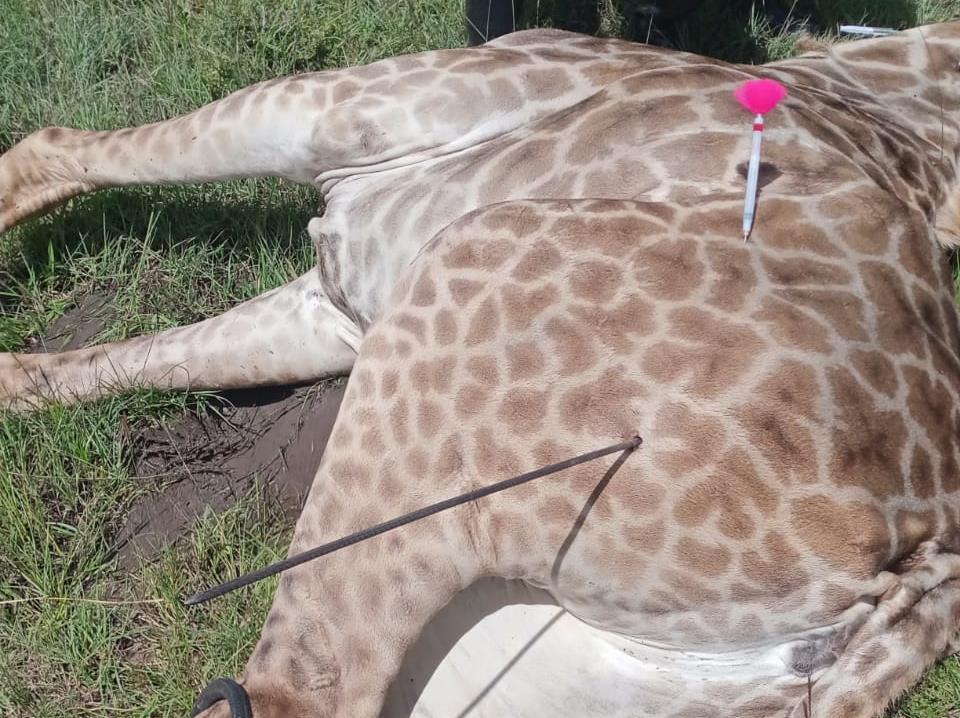
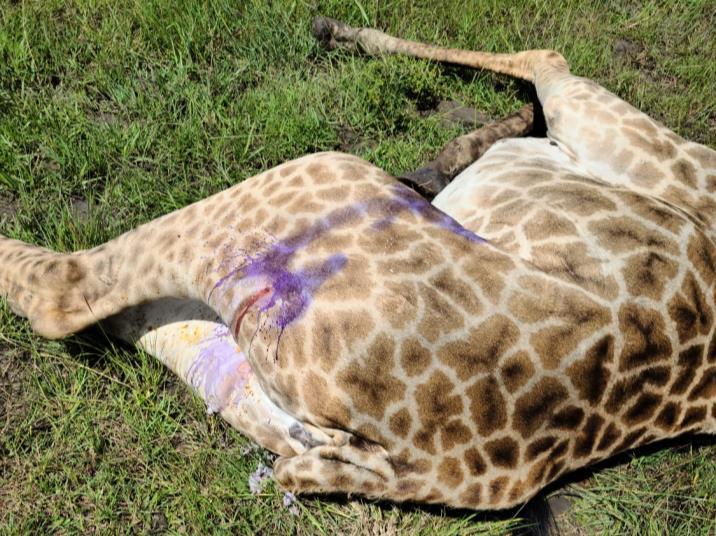
2 – 28th
Case
January 2024
Case 3 – 29th January 2024
Elephant Natural Causes
Mara North Conservancy
While on patrol, rangers reported sighting a lame elephant bull. The SWT/KWS Mara Mobile Veterinary Unit was notified and responded immediately.
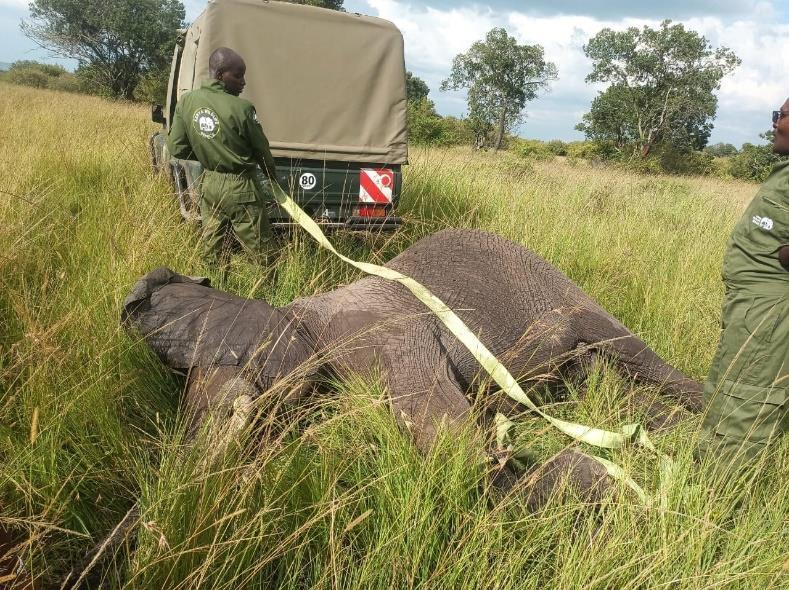

Immobilisation, examination and treatment
The animal was found in a herd of about 20 elephants foraging in a marshy area with thick bush Immobilizing the elephant in its present location was deemed too risky for personnel and for the elephant’s wellbeing. The elephant was therefore pushed to open group by a helicopter. It was successfully darted on the hind quarters with 16 mgs Etorphine and fully immobilized 10 minutes later Upon examination, the elephant was found to have a laxation of the hip joint. Systemically, 30,000mg Amoxicillin and 50mgs Dexamethasone were administered intramuscularly. According to the veterinarian’s assessment, the injury wasn’t severe, and the elephant bull will most likely recover fully. Anaesthesia was reversed with 170mgs Naltrexone administered both intravenously and intramuscularly.
Prognosis
The elephant bull has a good prognosis.




















